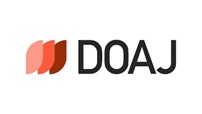Abstract
The purpose of this study is to show that the effectiveness of utilitarian versus hedonic attributefocused advertisement on product evaluation depends on the arousal level of positive emotion, and to explore mediation effect of cognitive response to utilitarian attribute-focused advertisement and affective response to hedonic attribute-focused advertisement on the effectiveness of utilitarian versus hedonic attribute-focused advertisement. This research employs a 2 (arousal level: mild vs. elevated) × 2 (advertisement type: utilitarian vs. hedonic) between-subjects design, and 200 undergraduate students participate in the experiment, in which there are 50 students at each experimental group. The results of ANCOVA with positive emotion level as a covariate on advertised product evaluation show significant interaction effect of arousal level and advertisement type, and no effect of positive emotional level. Both of the mediation effects of the cognitive response and those of the affective response are significant. Participants under mild (elevated) arousal of positive emotion more positively evaluate the product in utilitarian (hedonic) attribute-focused advertisement. The positive effect of utilitarian (hedonic) attributefocused advertisement on product evaluation is partially mediated by cognitive (affective) response to the advertisement when consumers are under the mild (elevated) arousal of positive emotion. The results of this study show that advertisers should use utilitarian (hedonic) attribute-focused advertisement to consumers under the mild (elevated) arousal of ambient positive emotion, which should be searched by exploring what kind of event they have experienced.
Recommended Citation
Choi, Nak Hwan and Oyunbileg, Tamir
(2016)
"Interaction Effects of Arousal Level of Positive Ambient Emotion and Advertisement Type on Product Evaluation,"
Asia Marketing Journal: Vol. 18
:
Iss.
1
, Article 3.
Available at: https://doi.org/10.15830/amj.2016.18.1.37
Creative Commons License

This work is licensed under a Creative Commons Attribution 4.0 License.





